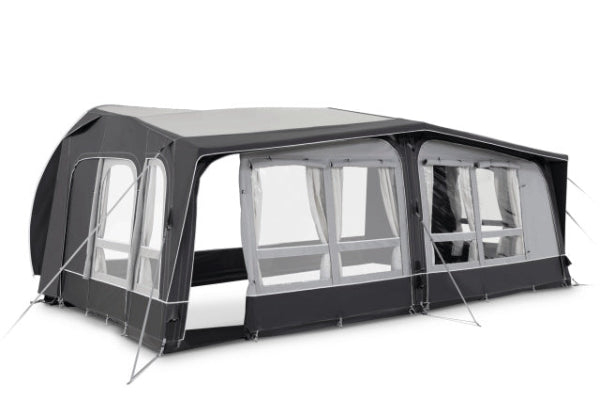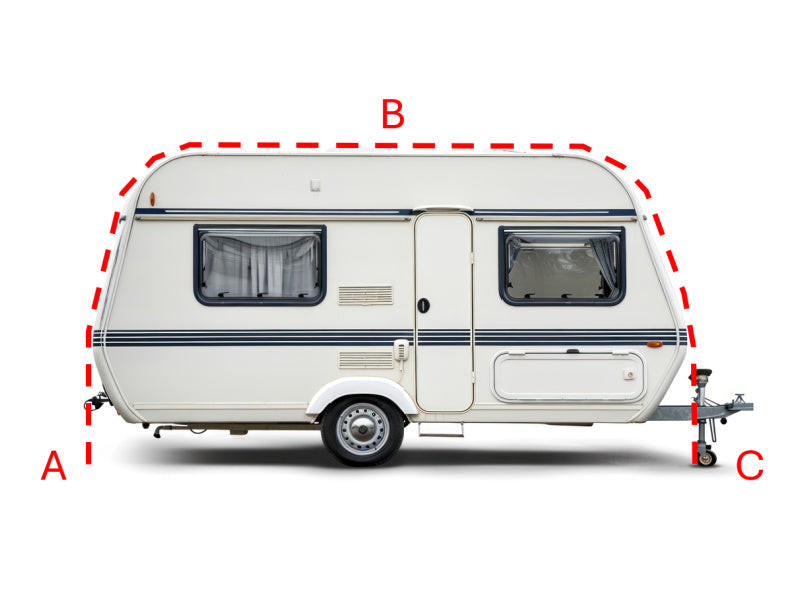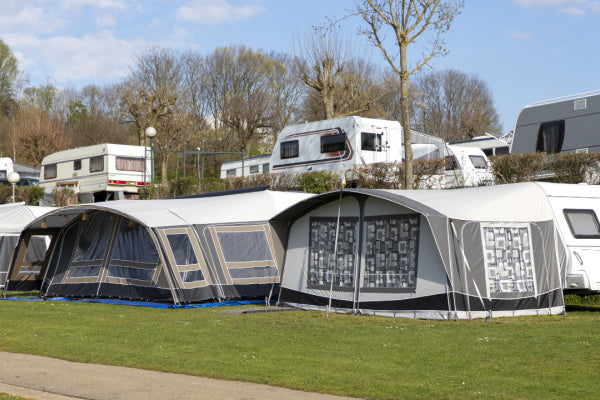What is an Air Awning and Why You Should Consider One
Ever wondered how to transform your caravan setup in minutes? Air awnings are ingenious inflatable shelters that replace traditional poles with air-filled beams. Think bouncy castle meets luxury camping! They're revolutionising outdoor living with push-button setup and rock-solid stability. Ready to see what the fuss is about?
Definition and Overview

Inflatable Structures for Outdoor Living
Imagine transforming your caravan's outdoor space in mere minutes. That's exactly what air awnings deliver. These innovative shelters have revolutionised the camping and caravanning world, replacing traditional metal poles with robust air-filled beams.
Think of them as your caravan's instant living room extension - except this one sets up faster than you can brew a pot of tea. Born from the same technology that powers inflatable paddleboards and rescue equipment, these structures bring cutting-edge design to outdoor living.
The concept might sound simple, but the engineering behind it is rather clever. Modern air awnings combine durability with convenience, creating extra living space that's both practical and comfortable.
Key Components: Inflatable Beams, Material, Attachment Systems
Breaking down an air awning reveals three crucial elements that work together seamlessly:
The backbone of the system lies in its air-filled beams. These aren't your average party balloon material - they're crafted from industrial-grade, reinforced materials that can withstand significant pressure. When inflated, these beams become as rigid as traditional metal poles but maintain crucial flexibility during strong winds.
The awning's fabric plays an equally vital role. Manufacturers use specially treated materials that laugh in the face of rain while standing up to intense sunlight. Most modern versions feature double-ripstop construction, similar to what's used in professional mountaineering gear.
Connecting everything to your caravan happens through sophisticated attachment systems. These include storm straps, robust clips, and weather-sealed joints that create a seamless connection between your vehicle and the awning.
How Air Awnings Work

Inflation and Structure
The magic happens when air meets engineering. Setting up begins with laying out the awning flat beside your caravan. Connect the inflation points - usually there's one main valve and several isolation valves that help maintain pressure in different sections.
As air pumps into the beams, something remarkable occurs. The flat fabric rises, taking shape as each beam fills. Within minutes, a solid structure stands ready for use. It's rather like watching a butterfly emerge from its chrysalis, except this transformation happens in minutes rather than days.
Modern air awnings typically maintain a pressure between 7-11 PSI (pounds per square inch). That's enough force to create rigid support beams while staying well within safety limits. Most quality models include pressure release valves to prevent over-inflation during hot weather.
Benefits of Air Awnings

Easy Setup and Take Down
Gone are the days of wrestling with poles in the wind or decoding complex assembly instructions. Air awning setup typically requires just three steps: attach, inflate, and secure. Even in challenging weather, most users can complete the entire process in under 15 minutes.
The takedown process proves equally straightforward. Release the air, and the structure naturally collapses for easy packing. No more sorting poles or struggling with tangled guy ropes.
This simplicity particularly shines during unexpected weather changes. When dark clouds threaten, quick setup times mean you're sheltered before the first raindrops fall.
Stability and Wind Resistance
Despite their inflatable nature - or perhaps because of it - air awnings show remarkable resilience in challenging weather. Their flexible structure actually works to their advantage.
While traditional pole awnings can snap under pressure, air beams flex and bend with the wind. This flexibility allows them to distribute force throughout the structure rather than concentrating it at rigid points.
During testing, quality air awnings regularly withstand wind speeds that would challenge traditional alternatives. The key lies in their ability to absorb and disperse energy rather than fighting against it.
Versatility and Adaptability
Modern air awnings offer impressive adaptability to different situations and environments. Many feature removable panels that allow for multiple configurations - from fully enclosed spaces to open-sided sun shelters.
The design allows for quick adjustments to suit changing weather conditions. Ventilation panels can be opened during warm weather or sealed tight when rain threatens. Some models even include multiple entry points, letting users adapt their setup to different pitching positions or sun angles.
Storage solutions come built into many models. Integrated pockets and hanging points let campers organise their space effectively, turning the awning into a proper outdoor living room.
The inflation technology also means these awnings pack down remarkably small compared to their pole-based cousins. This compact storage proves particularly valuable for caravan owners, where space always comes at a premium.
Their adaptability extends to different seasons too. Many manufacturers offer specific winter and summer versions, with varying materials and ventilation options to suit seasonal conditions. Some even provide interchangeable panels, letting owners adapt a single awning for year-round use.
Beyond basic shelter, air awnings create versatile spaces that serve multiple purposes. They can transform into outdoor kitchens during summer barbecues, provide shelter for muddy boots and wet gear during rainy spells, or offer extra sleeping space when needed.
This flexibility makes them particularly valuable for long-term travellers who face varying weather conditions and usage needs. The ability to quickly modify the setup helps users make the most of their outdoor space, regardless of what mother nature throws their way.
Other content you might like:
- Are air awnings easy to put up?
- What size air awning do I need?
- Air awning vs pole awning
- Do air awnings fit any caravan?
- Are air awnings good in the wind?
- Air awning on uneven ground
- Air awning makes: Guide to brands
- Air awning pressure: Achieve the perfect fit
- Air awning reviews
- Are air awnings any good?
- Are air awnings heavy?
- Are air awnings suitable for seasonal pitches?
- How long do air awnings last?
- Air Awning Sizes
- Can you sleep in an air awning?
- Can you leave an air awning up all year?





Leave a comment